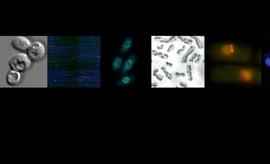A PD-1/PD-L1 Proximity Assay as a Theranostic Marker for PD-1 Blockade in Patients with Metastatic Melanoma
AbstractPurpose:Less than 50% of patients with melanoma respond to anti–programmed cell death protein 1 (anti–PD-1), and this treatment can induce severe toxicity. Predictive markers are thus needed to improve the benefit/risk ratio of immune checkpoint inhibitors (ICI). Baseline tumor parameters such as programmed death ligand 1 (PD-L1) expression, CD8+ T-cell infiltration, mutational burden, and various transcriptomic signatures are associated with response to ICI, but their predictive values are not sufficient. Interaction between PD-1 and its main ligand, PD-L1, appears as a valuable target of anti–PD-1 therapy. Thus, instead of looking at PD-L1 expression only, we evaluated the predictive value of the proximity between PD-1 and its neighboring PD-L1 molecules in terms of response to anti–PD-1 therapy.Experimental Design:PD-1/PD-L1 proximity was assessed by proximity ligation assay (PLA) on 137 samples from two cohorts (exploratory n = 66 and validation n = 71) of samples from patients with melanoma treated with anti–PD-1±anti–CTLA-4. Additional predictive biomarkers, such as PD-L1 expression (MELscore), CD8+ cells density, and NanoString RNA signature, were also evaluated.Results:A PD-1/PD-L1 PLA model was developed to predict tumor response in an exploratory cohort and further evaluated in an independent validation cohort. This score showed higher predictive ability (AUC = 0.85 and 0.79 in the two cohorts, respectively) for PD-1/PD-L1 PLA as compared with other parameters (AUC = 0.71–0.77). Progression-free and overall survival were significantly longer in patients with high PLA values (P = 0.00019 and P < 0.0001, respectively).Conclusions:The proximity between PD-1 and PD-L1, easily assessed by this PLA on one formalin-fixed paraffin-embedded section, appears as a new biomarker of anti–PD-1 efficacy.


